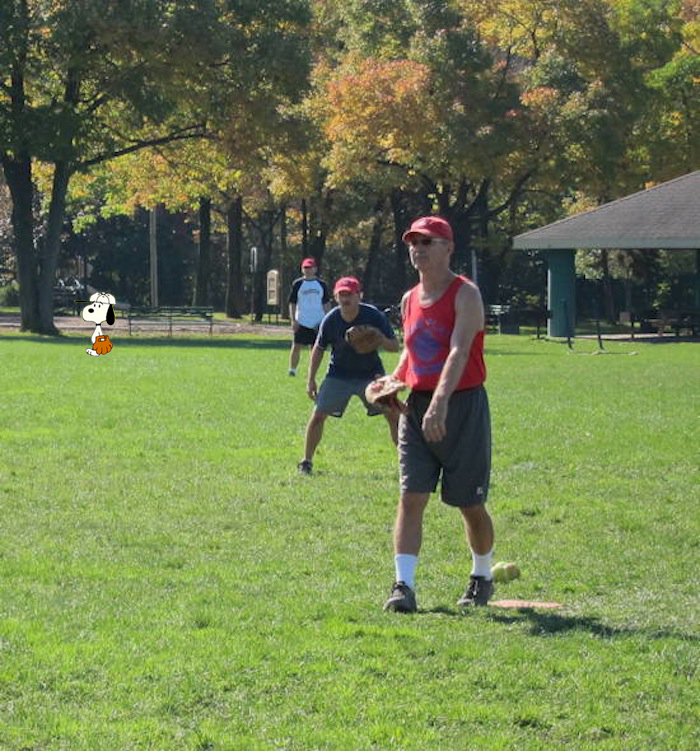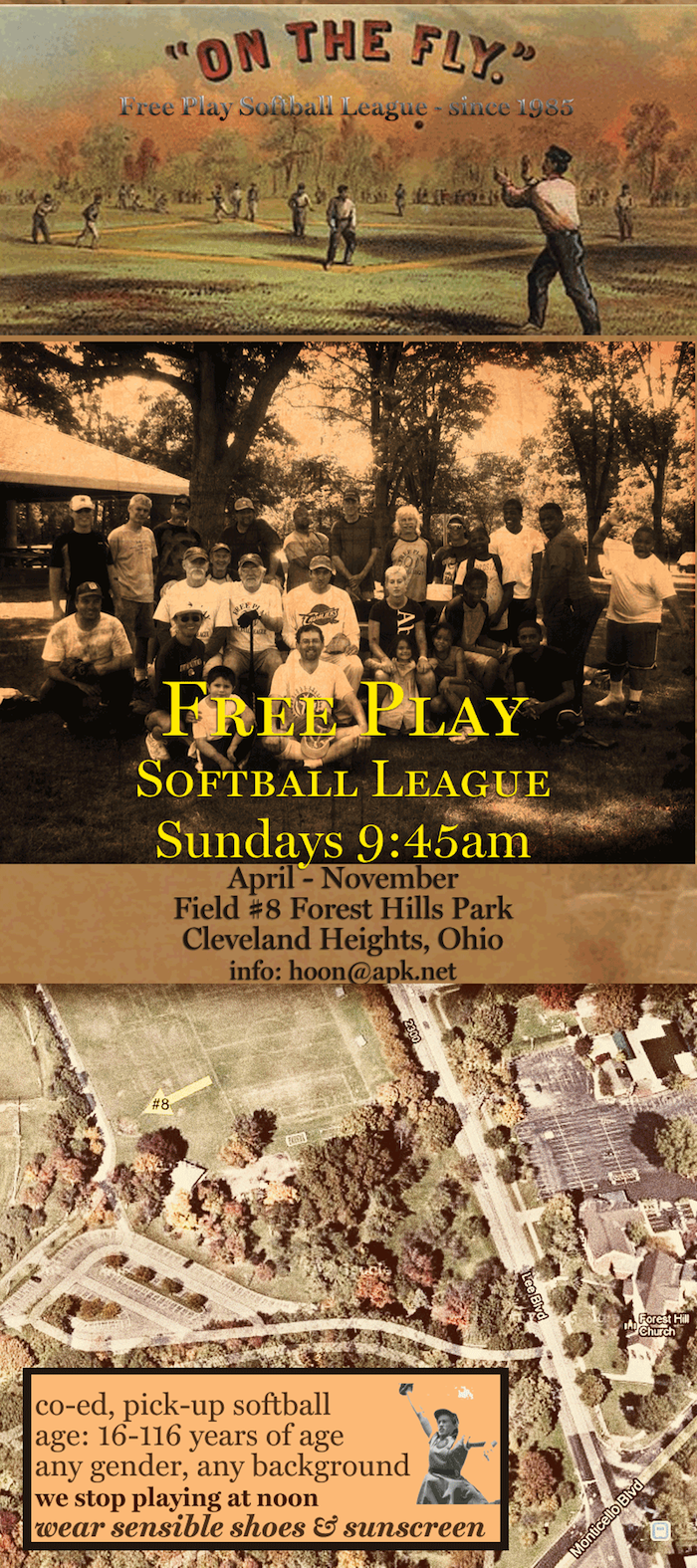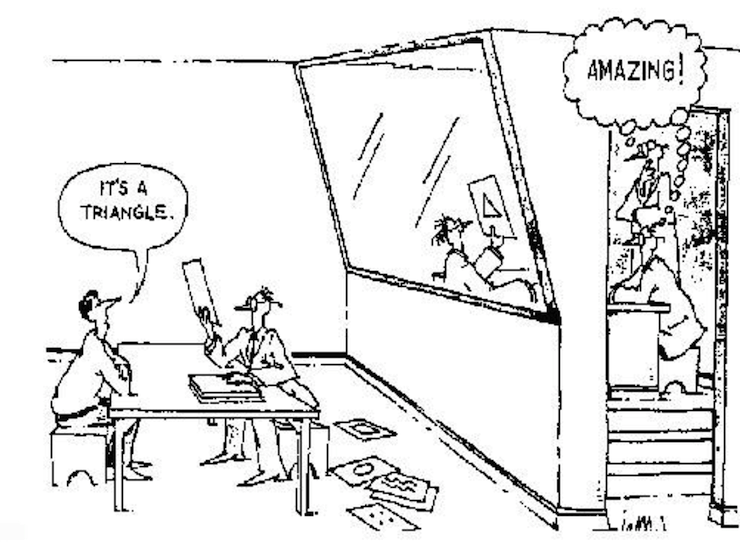
I started playing Free Play Softball in Cleveland Heights in 2002. It brought me back to left field for the first time in eighteen years. (I had spent the interim playing the only team sport I was ever really good at, volleyball and grass doubles volleyball.) Taking up softball again brought back memories of having previously formulated two-thirds of a lockdown outfield with Bob Buckeye as member of the Abernathy Special Collections Library ‘challenge’ team at Middlebury Collegebetween 1976-1984.
What changed for me between the ages of thirty and forty-eight? Slower. The hand-eye coordination always was my ace capability, but you have to get to the ball first. I never was a terrific hitter, although the scratch stats I’ve been keeping ever since the Hawken School intramural league (in 1971-1972,) indicate, at least, consistency. Yet, last year I figured out a missing piece of the craft of hitting and reeled off the hottest eight weeks of singles hitting ever, at the age of 58!
Today, opening day, I mention these personal tidbits because in ensuing recaps, as is usually the case, I will focus on being one of the key organizational developers of the weekly game. This is the oblique way of putting the following: I carry the equipment in my trunk, I store it over the winter, and, since 2004 I have been making out the line-ups with an eye on creating the conditions for equitable play. With all those tasks comes awesome obligations and presumptions of ritual and instrumental power. These features have long gone to my head, and to, especially my big now old Scots’ heart.
Everybody wins is my goal.

Learning to Play, Playing to Learn
A Case Study of a Ludic Learning Space
Alice and David A. Kolb
In this paper we propose an experiential learning framework for understanding how play can potentially create a unique ludic learning space conducive to deep learning. (full paper pdf)
excerpt:
History of the [Free Play Softball] league
In the mid 1970’s, Case Western Reserve University organized an intramural softball league from different departments and fraternity groups which have been competing ever since on a regular basis. The Organizational Behavior Department organized its own team made up of faculty, staff, students and family members. Overtime, the games became increasingly competitive and aggressive, and the OB team, which was much more inclusive when it came to its member composition (composed of men, women, and physically disabled individuals with varying skill levels) found itself at disadvantage playing against highly skilled, competitive, intramural teams.
Born out of this experience was the desire to create a league independent from the competitive intramural league, where anyone would come together to play just for the fun of the game. David, one of the founders of the game, remembers his motivation to start a different kind of league because “softball was too much fun to be left only to those who could play well.” In essence, those words summarized the vision for the pick up softball game and so the league was born in 1991. The league met every Sunday morning from 10:00 am to 12:00 pm at the baseball field of the University campus. The season began on the first Sunday after tax day in April and ended at the first snow in November. David provided the softball equipment and took it on himself to haul the balls, bats, gloves and bases and set up the field every Sunday morning. In the early years the term “league” may have been a bit grandiose for the game. The participation was random and sparse, not enough to make up two teams. Regardless of who or how many showed up, members played catch, hit balls, practiced fielding. Those for whom softball was a new experience learned the rules of the game as they played along. There was no designated coach or manager, or team captain for that matter; those who knew how to play helped those who were new to the game. As membership grew, and the converts regularly showed up, two teams were made up, sometimes five on each side, other times seven. Only after several years was the full complement of ten players on a side reached, and then only occasionally in the middle of the summer.
In 1995, the game was moved to a new softball field within a neighborhood park close to the University campus. Following the move to the new field membership began to grow not only in its size, but also in its diversity by gender, age, ethnicity, socio- economical background, and softball skill level. What had started out as a fairly homogeneous population of OB faculty, students, families and friends, began increasingly attracting local residents who found out about the game from different people and sources. Over time, new players joined from other counties, some of them taking a forty five minute bus ride to the ball field. Guided by the league’s founding vision, “fun softball for all,” everyone was welcome. In the fifteenth year of its existence, the league adopted “Free Play Softball League” as its official name, celebrating the special occasion with anniversary shirts and hats.
The Free Play ball field was in a grass park next to the city baseball fields. Unlike the impeccably manicured city league fields, the Free Play field was poorly maintained with no score board, lights or dugouts. The home plate area was particularly a mess, with weeds growing behind the base and the deep indentations in the batter’s box. The backstop was old and torn at the bottom. It was almost as if the Free Play league existed in the shadow of the city league, unnoticed by the city, or by the neighborhood community. The “league up on the hill,” as the Free Play members used to call the city league, was a highly competitive softball league, with die hard aggressive players pushing each other to their limits to win the game. As Lebron would say, pointing to the city fields, “over there, you get out there every single time to kick ass and beat the other team. It is not like our league.” In the Free Play league, we played a different kind of game.








